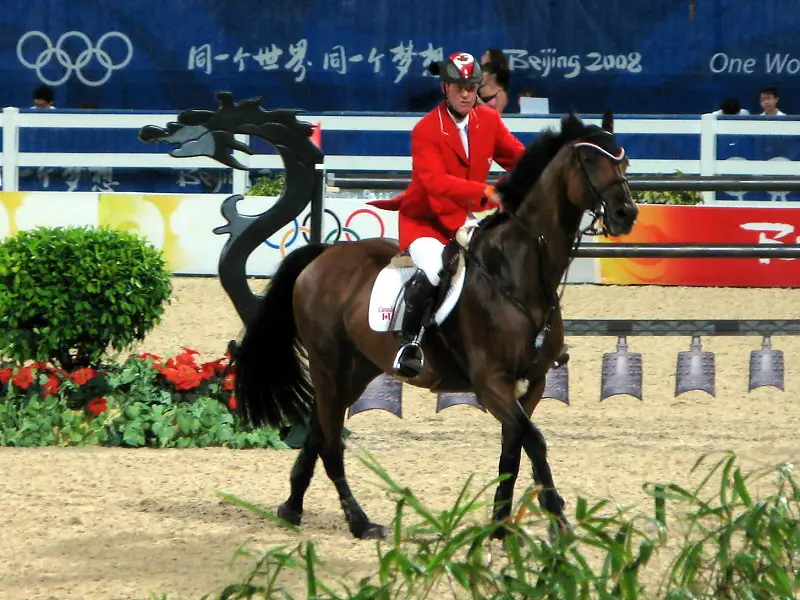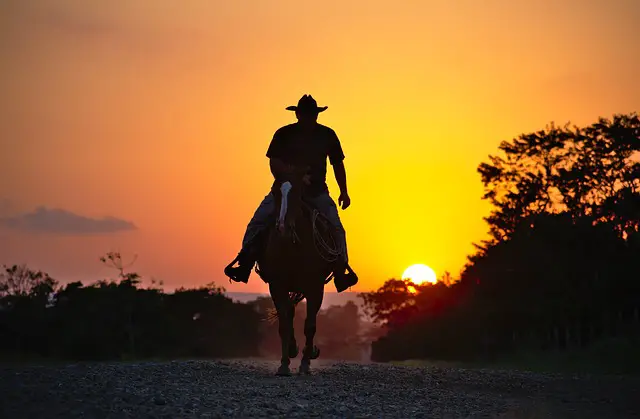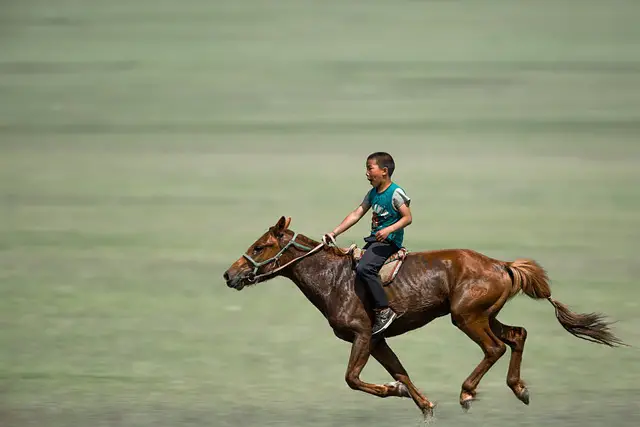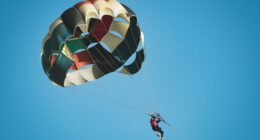Equestrian refers to the sport or activity involving horses, while horse riding is simply the act of riding a horse, which is a part of equestrianism.
What is Equestrian?

Equestrian refers to the broader concept of horse-related activities, encompassing various disciplines and competitions. According to the definition, equestrian is the practice or sport of riding or working with horses. Equestrian disciplines include dressage, show jumping, eventing, endurance riding, and more. Each discipline has its own specific rules, techniques, and equipment.
1. Definition of Equestrian
“Equestrian is the practice or sport of horseback riding. It involves various activities and disciplines that center around horses. Equestrian can encompass activities such as horse racing, show jumping, dressage, endurance riding, and polo, among others. The definition of equestrian refers to the broad range of activities that involve interacting with and riding horses.
In equestrian disciplines, individuals can compete individually or as part of a team, showcasing their skills in horsemanship and their ability to navigate different obstacles and perform specific movements. It requires a certain level of skill, training, and expertise to excel in equestrian disciplines.
Equestrian also encompasses the overall care and management of horses, including feeding, grooming, and ensuring their overall well-being. It is a comprehensive discipline that involves both the rider and the horse working together in harmony.
It is important to note that equestrian is not limited to professional riders or athletes. Many people enjoy horseback riding as a recreational activity, for leisure, or for therapeutic purposes.
The definition of equestrian encompasses the broad range of activities and disciplines involving horseback riding, showcasing the bond between humans and horses and the skills required to excel in this field.”
2. Equestrian Disciplines
- Equestrian Disciplines: These equestrian disciplines highlight the diverse range of skills and abilities required in the world of horse riding. Each discipline offers a unique experience and challenges riders to continuously improve their technique and connection with their equine partner.
- Jumping: This discipline involves jumping over a series of obstacles, such as fences or poles, in a specified order and within a certain time limit. It tests the horse and rider’s athleticism and accuracy.
- Dressage: Dressage focuses on precision and control. It showcases the horse’s ability to perform a series of predetermined movements, such as lateral movements, transitions, and pirouettes, with grace and elegance.
- Eventing: Eventing combines the disciplines of dressage, cross-country, and show jumping. It is a comprehensive test of the horse and rider’s skills, including endurance, technicality, and agility.
- Reining: Reining is a western discipline that showcases the horse’s ability to perform precise patterns of spins, stops, circles, and sliding stops. It emphasizes the horse’s athleticism and responsiveness.
- Endurance riding: Endurance riding tests the horse’s stamina and the rider’s ability to care for the horse over long distances. It typically involves riding over varied terrain and includes mandatory veterinary checks.
- Western pleasure: Western pleasure focuses on the horse’s calm and relaxed movement. It involves performing a series of movements, such as walking, jogging, and loping, with minimal cues from the rider.
What is Horse Riding?

Horse riding specifically refers to the act of riding a horse for recreational or transportation purposes. It is a more general term that encompasses various types of horse riding activities such as trail riding, pleasure riding, and horseback riding lessons.
1. Definition of Horse Riding
The definition of horse riding incorporates the practice of riding horses and involves the use of various skills and techniques. It refers to the act of sitting on a horse’s back and controlling its movements, typically for recreational or competitive purposes. Horse riding can also be used for transportation, work, or therapeutic purposes.
The definition of horse riding encompasses the physical act of being mounted on a horse and guiding its actions through the use of reins, body movements, and verbal commands. It requires a certain level of balance, coordination, and control to effectively communicate with the horse and maintain a safe and enjoyable experience.
There are different types of horse riding, such as pleasure riding, trail riding, show jumping, dressage, and Western riding, each with its own set of techniques and objectives. These various disciplines provide riders with opportunities to specialize and excel in different areas of horsemanship.
The definition of horse riding involves the act of riding a horse, utilizing specific skills and techniques to control and communicate with the animal. It is a diverse activity with various purposes and disciplines, offering riders a unique and rewarding experience.
2. Types of Horse Riding
- Types of Horse Riding: In dressage, riders and horses perform a series of precise movements and patterns. It focuses on the harmony and communication between the rider and the horse. The goal is to showcase the horse’s obedience and flexibility.
- Types of Horse Riding: Show jumping involves jumping over a series of obstacles in a timed event. It tests the horse’s jumping ability and the rider’s skill in navigating the course accurately and efficiently.
- Types of Horse Riding: Eventing combines three disciplines – dressage, cross-country, and show jumping. It is a comprehensive test of horse and rider, assessing their abilities in different areas.
- Types of Horse Riding: Western riding is rooted in the traditions of the American West. It includes events like barrel racing, roping, and reining. Riders use Western-style equipment and focus on maneuverability and precision.
- Types of Horse Riding: Trail riding involves riding horses outdoors on trails and in natural environments. It is a leisurely activity that allows riders to explore different terrains and enjoy nature.
What are the Key Differences Between Equestrian and Horse Riding?
The key differences between equestrian and horse riding lie in their focus and purpose, skill level and training, equipment and attire, as well as the presence of competition and events. Equestrian disciplines have a specific focus and are often geared towards competitive performance. Horse riding, on the other hand, can be more casual and recreational, focusing on the enjoyment and experience of being on horseback.
1. Focus and Purpose
The key differences between equestrian and horse riding in terms of focus and purpose are:
- Equestrian focuses on competitive sports and events involving horses. It is a highly organized and regulated discipline.
- Horse riding, on the other hand, encompasses a broader range of activities and experiences involving horses, including leisurely trail rides, recreational riding, and therapeutic riding programs.
Equestrian is centered around the pursuit of excellence in various specialized disciplines, such as show jumping, dressage, eventing, and reining, among others. The goal is to compete and achieve success in these specific sports.
Horse riding, on the other hand, serves different purposes depending on the individual. It can be a form of exercise, a means of relaxation and connection with nature, an opportunity for bonding with horses, or a way to improve overall horsemanship skills.
While equestrian is driven by the desire for achievement and recognition in competitive settings, horse riding encompasses a wider range of personal goals and motivations, catering to both competitive and non-competitive riders.
2. Skill Level and Training
- The skill level required for equestrian varies depending on the specific discipline. Some disciplines, such as dressage and show jumping, require a high level of technical skill and precision. Riders must spend years training to develop the necessary balance, coordination, and finesse.
- Training in equestrian involves consistent practice and dedication. Riders must undergo regular lessons with experienced trainers to improve their riding skills and develop a strong bond with their horse.
- Equestrian training also includes learning about horse behavior, care, and maintenance. Riders must have a deep understanding of horse psychology and be able to communicate effectively with their equine partner.
- Training in equestrian often involves physical fitness, as riders need to have good core strength, balance, and flexibility. Many riders also engage in strength and conditioning exercises to improve their riding performance.
- As riders progress in their skill level and training, they may have the opportunity to compete in various equestrian events. Competitions provide valuable experience and allow riders to showcase their abilities.
3. Equipment and Attire
When it comes to equestrian and horse riding, having the right equipment and attire is crucial. Here are some important things to consider:
- Helmets: A well-fitting and certified helmet is essential for safety during horse riding. It helps protect your head in case of falls or accidents.
- Riding Boots: Sturdy and comfortable riding boots with a slight heel are important for proper grip and control of the horse’s reins and stirrups.
- Breeches or Jodhpurs: These specially designed pants provide comfort and flexibility while riding. They also come with reinforced knee patches or full-seat patches for improved grip in the saddle.
- Riding Gloves: Gloves not only protect your hands from developing blisters but also provide a better grip on the reins.
- Riding Jacket or Vest: Depending on the weather conditions, a lightweight jacket or vest can keep you comfortable during your ride.
It’s vital to always wear the appropriate equipment and attire to ensure safety and a comfortable riding experience.
4. Competition and Events
| Competition | Events |
| Equestrian competitions offer a range of events for riders to participate in, such as show jumping, dressage, and eventing. | There are different types of events for riders to participate in, including show jumping, dressage, and eventing. |
| Examples include show jumping, dressage, and eventing. | Riders can compete in disciplines such as dressage, show jumping, eventing, and endurance riding. |
| These events test the horse and rider’s skill, agility, and teamwork. | The events are designed to showcase the horse and rider’s abilities and test their performance. |
| Points are awarded based on performance, with the goal of achieving the highest score or fastest time. | Competitors are awarded points or rankings based on their performance in each competition and event. |
| Horse shows and competitions are held at various levels, from local to international. | There are competitions at different levels, providing opportunities for riders of all skill levels to participate in. |
Equestrian competitions offer a range of events for riders to participate in, such as show jumping, dressage, and eventing. These events are designed to test the horse and rider’s skills, with points awarded based on performance. Horse shows and competitions are held at various levels, providing opportunities for riders of all skill levels to compete. Whether you are a beginner or an experienced rider, there are events available to challenge and showcase your abilities. So, if you are interested in testing your skills and competing in a supportive and competitive environment, consider participating in equestrian competitions and events.
Can Equestrian and Horse Riding be Used Interchangeably?
No, equestrian and horse riding cannot be used interchangeably, as they refer to different concepts within the realm of horses and horsemanship.
Equestrian is a broader term that encompasses various activities related to horses, including riding, training, and competing. It refers to the overall involvement and knowledge of horses and horsemanship.
Horse riding, on the other hand, specifically refers to the act of sitting on and controlling a horse for transportation, recreation, or sport. It is a specific activity within the equestrian domain.
While horse riding is a fundamental aspect of equestrianism, equestrianism encompasses a wider range of disciplines such as dressage, show jumping, eventing, polo, and endurance riding.
Therefore, it is important to understand the distinction between these two terms and use them appropriately to accurately convey the intended meaning.
Frequently Asked Questions
What is the difference between equestrian and horse riding?
The terms “equestrian” and “horse riding” can be used interchangeably to refer to the activity of riding horses. However, “equestrian” is often associated with more formal or competitive riding, such as in Olympic Games or equestrian competitions. “Horse riding” is a broader term that encompasses recreational or non-competitive riding activities.
Can you provide examples of equestrian activities?
Sure! Some examples of equestrian activities include guided riding tours, circus acts involving horses, police work involving mounted officers, horseback riding in rodeo shows, controlling herd animals like cattle or sheep, fox hunting, and participating in competitive events like tent pegging or dressage in the Olympic Games. These activities showcase different purposes and skills within the realm of equestrianism.
Is there a cultural difference in the usage of equestrian and horse riding?
Yes, there can be a cultural difference in the usage of these terms. In British English, “horse riding” is the more common expression, while in American English, “equestrian” or “horseback riding” is more commonly used. The use of “equestrian” in American English is often associated with a posh or formal version of saying “horse riding.”
Can you give example sentences using the term “equine”?
Certainly! Here are a few example sentences using the term “equine”:
- “The disease spread throughout the country and led to many equine deaths.”
- “The equine field includes not only horses, but also donkeys, zebras, and mules.”
- “You can witness equestrians showcasing their skills and horsemanship at the Olympic Games.”
What are some recreational activities related to horse riding?
Some recreational activities related to horse riding include independent riding or trail riding, where individuals can explore horse trails or simply enjoy riding in nature. Non-competitive recreational riding can be a relaxing and enjoyable way to bond with horses while appreciating the outdoors.
Is there a difference between horseback riding and motorcycle seat riding?
Yes, there is a difference. “Horseback riding” specifically refers to riding a horse while seated on its back. On the other hand, “motorcycle seat riding” refers to riding a motorcycle while seated on a specially designed seat. The two terms describe different modes of transportation and require different skills and equipment.
Image Credits
Featured Image By – Kanenori from Pixabay
Image 1 By – lamhkczbb on Flickr
Image 2 By – Ronald Plett from Pixabay









